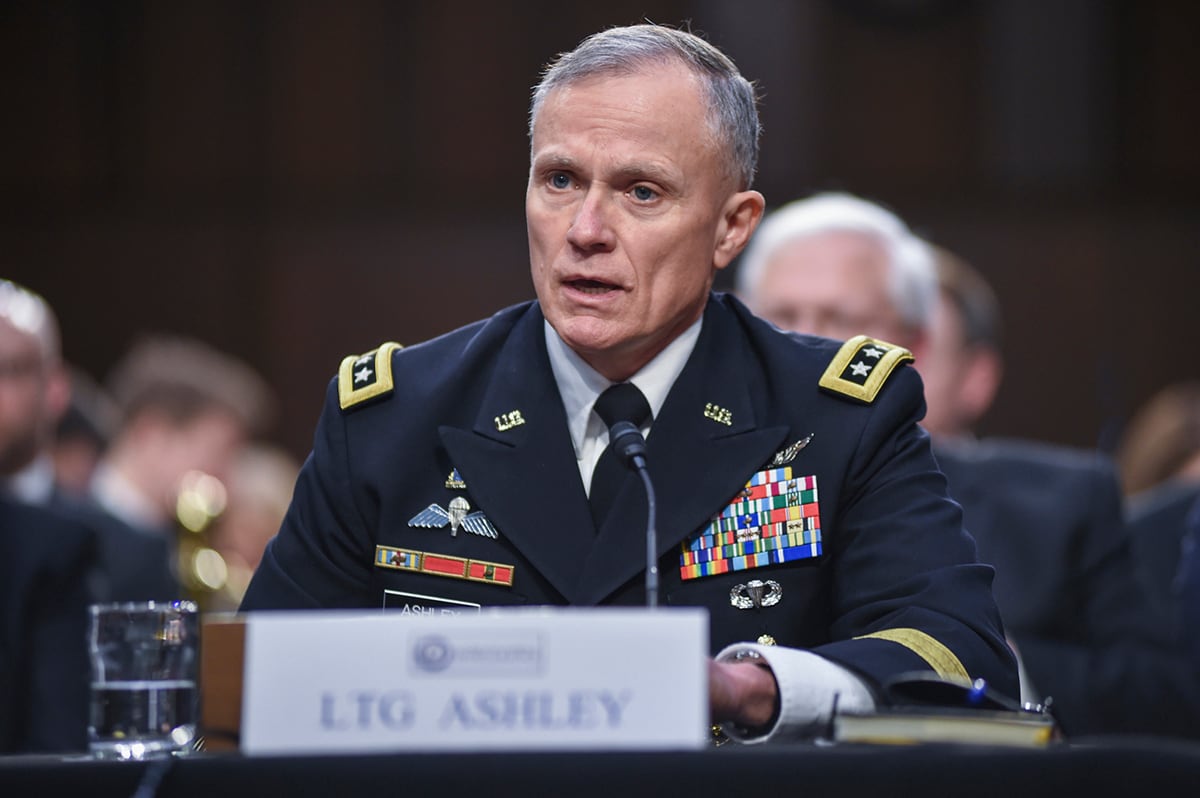SIMI VALLEY, Calif. — The biggest threat posed by Russia and China lies in advancements in space capabilities, the U.S. Air Force chief of staff said during a panel at the Reagan National Defense Forum on Saturday.
Gen. Dave Goldfein joined chiefs from the three other services on stage at the forum, all of whom acknowledged threats posed by both Russia and China across the various domains. However, they acknowledged that an increased focus on armed forces anchored by a strong economy enable China to advance more quickly and with more sophistication.
“Russia is a rather dangerous threat because it’s an economy in decline and the demographics are challenging for the president,” Goldfein said.
“We’ve seen his [Vladimir Putin’s] actions when he finds himself” in that position," Goldfein added. “But China is the face of the threat. China has the economy."
RELATED

In terms of space specifically, the threat lies not only in China’s increased domain awareness, he added, but the capabilities that the country is fielding.
China has been building up its anti-satellite weapons since 2007 to include kinetic weapons, jamming devices that can block GPS or satellite communications, and ground-based lasers. China has also bolstered its space capabilities and will boast the largest GPS-like system in space by 2020, Defense Intelligence Agency Director Lt. Gen. Robert Ashley said in November. He also noted that China conducted more space-oriented operations in 2018 than any other nation, and that the country possesses 250 military, civilian and commercial satellites in orbit — second only to the United States.
Goldfein pointed to three priorities for space investments during the panel.
First, “we have to defend what we have. At the same time we need to transition to defendable architecture. But it’s not good enough to take punches in the ring. At some point you have to punch back. And third, we need to transition our force into a war-fighting force” from one that for years dealt with a domain that Goldfein described as “relatively benign.”
The Air Force chief referenced findings of war games that the Air Force conducted in the space realm, among which was the 13th Schriever Wargame at Maxwell Air Force Base in Alabama in September. In that war game scenario, the year was 2029 and U.S. Air Force Space Command examined the integration activities of multiple agencies associated with space systems and services.
“In every war game we determined that if you move first in space, you’re not guaranteed to win. But if you move second, you’re likely to lose,” Goldfein said.
Beyond space, Gen. David Berger, commandant of the U.S. Marine Corps, pointed to China’s pivot to the sea as a primary threat that has already forced a shift in how the joint force addresses security in Asia.
Jill Aitoro is editor of Defense News. She is also executive editor of Sightline Media's Business-to-Government group, including Defense News, C4ISRNET, Federal Times and Fifth Domain. She brings over 15 years’ experience in editing and reporting on defense and federal programs, policy, procurement, and technology.







